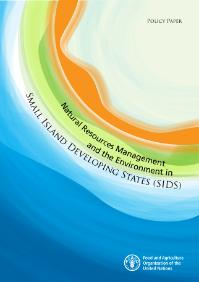Jamaica will face future climate trends marked by increases in the intensity and frequency of climate extremes, escalating rainfall variability, and increased droughts and floods; combined with fragile ecosystems and sensitive coastal zones, the result is that Jamaica has a relatively high…
Fit-for-purpose mechanisms for developing land administration systems have been posited to be especially effective in resource strapped economies since these mechanisms quickly create the settings for economic as well as social and environmental development. Competition for depleted resources in…
Land degradation exacerbates the unique vulnerabilities of Small Island Developing States (SIDS) to environmental challenges, such as climate change, flash floods, soil erosion, lagoon siltation, coastal erosion and sea level rise, undermining their economic potential. Land Degradation…
lack of transparency in the land and property sector prevents individuals, communities and governments from unlocking the value of the property as an asset, and undermines policies and legal frameworks that aim to provide land tenure security, potentially leading to a misallocation of rights. In…
The Food and Agriculture Organization of the United Nations (FAO) has developed a series of Technical Guides to elaborate and provide more detailed guidance on thematic areas contained within the Guidelines. As part of this series, this Technical Guide covers the issues associated with the…
El Estado y el sector privado requieren la valoración de los derechos de tenencia por una amplia gama de motivos, a menudo fundamentando y sentando las bases de las transacciones, la tributación, la compensación y la contabilidad. Si bien el valor y el proceso de valoración tienen repercusiones…
This policy paper focuses on the environmental challenges of sustainable development issues with particular attention to natural resource management, environment and climate change in the food and agriculture sector (including crops, livestock, fisheries and forestry). FAO’s agriculture,…
More than 80 percent Canadians live in cities with almost one-quarter of country’s total population living in the Greater Golden Horseshoe (GGH) area. The GGH stretches in a curve around the western side of Lake Ontario with the City of Toronto occupying the northern side of the horseshoe. The…
The Bahamas became an FAO member state in 1975. Cooperation has focused on strategic development and increased competitiveness of the country’s agriculture and fisheries sector, with FAO interventions comprising policy and legislative support, technical development projects and rehabilitation…
Jamaica joined FAO in 1963. In 1978, the Organization established a representation in Jamaica which today also coversthe Bahamas and Belize. Over the years, FAO has partnered with Jamaica to achieve sustainable agricultural and ruraldevelopment, mainly through the Organization’s Technical…
La dificultad de definir y cuantificar la degradación de bosques es una limitación importante para que la mayoría de los países en desarrollo incluyan compromisos de reducción de emisiones por degradación en el contexto del enfoque de Reducción de Emisiones por Deforestación y Degradación de…
Articulo presentado al 3er Congreso Iberoamericano de Suelo Urbano, Curitiba, Brasil, agosto 2017 El objetivo del artículo es presentar los principales hallazgos del estudio, ilustrando las ideas fuerza con datos y hechos característicos de los diferentes países. La estructura propuesta es la…












